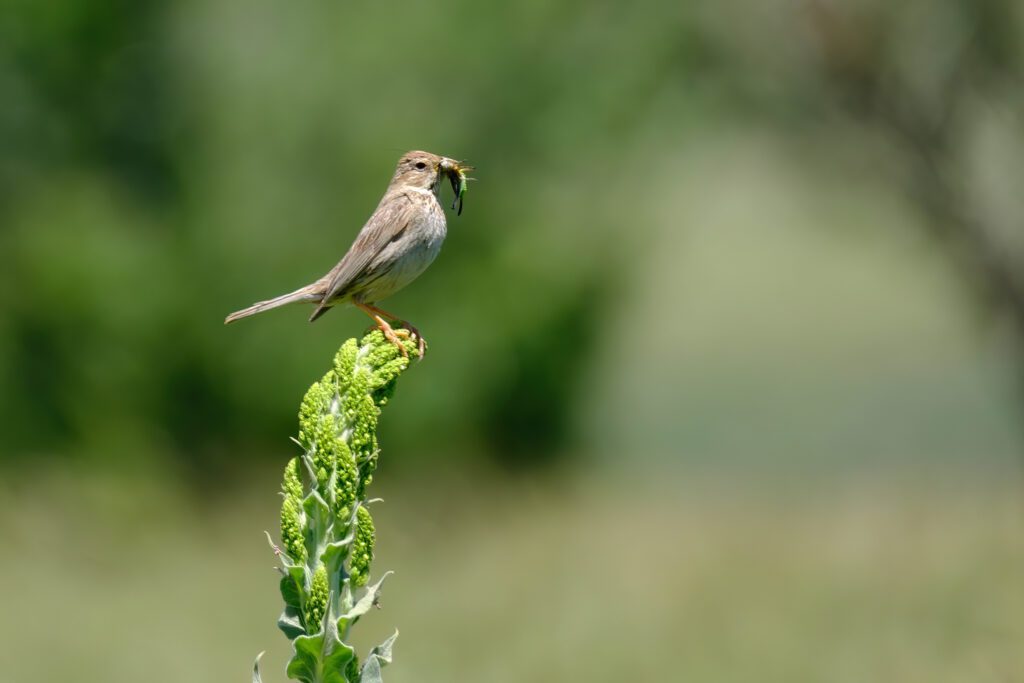Birdwatching in Turkey
Introduction
Birdwatching in Turkey – Turkey is blessed with a distinctive, diverse habitat that supports a wide array of wildlife, including forests, steppes and wetlands. Located along a major bird migration route between Europe and Africa, the widespread availability of marshlands makes Turkey a prime spot for birdwatching. Many species can be observed flying over the Bosporus Strait, such as eagles, hawks, falcons, buzzards, ibises and both white and black storks.
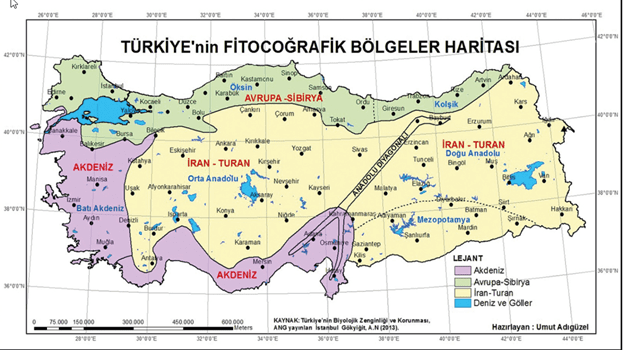
The season for birdwatching extends from April through to November, with the best time to see indigenous and reproducing species being between April and June. Over 460 species, including 330 breeding birds, can be seen around the country. Certain species at risk of extinction, such as the marbled teal, Dalmatian pelican, greater spotted eagle and sociable plover can also be seen.
Although birdwatching is not as popular in Turkey as it is in European countries, tourists interested in birds flock to Istanbul and Turkey from all over the world. To closely watch birds make their way back to warmer climes, there are some places you should certainly visit. Read birdhouses in Turkey.

Bird Routes in Turkey
For centuries, migratory birds have followed routes over lands, passing massive water bodies through narrowest points. The shortest land connection on migration route determined by birds, is in Turkey.
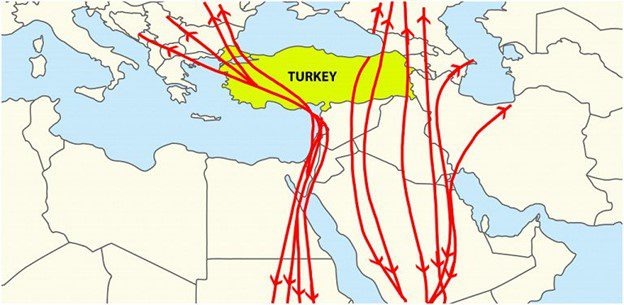
Migratory birds that have to cross the sea, prefer the narrowest points such as the Bosphorus and Dardanelles Strait. They use lower passages as Arhavi, Borçka-Artvin and Belen-Hatay as they fly over high mountains.
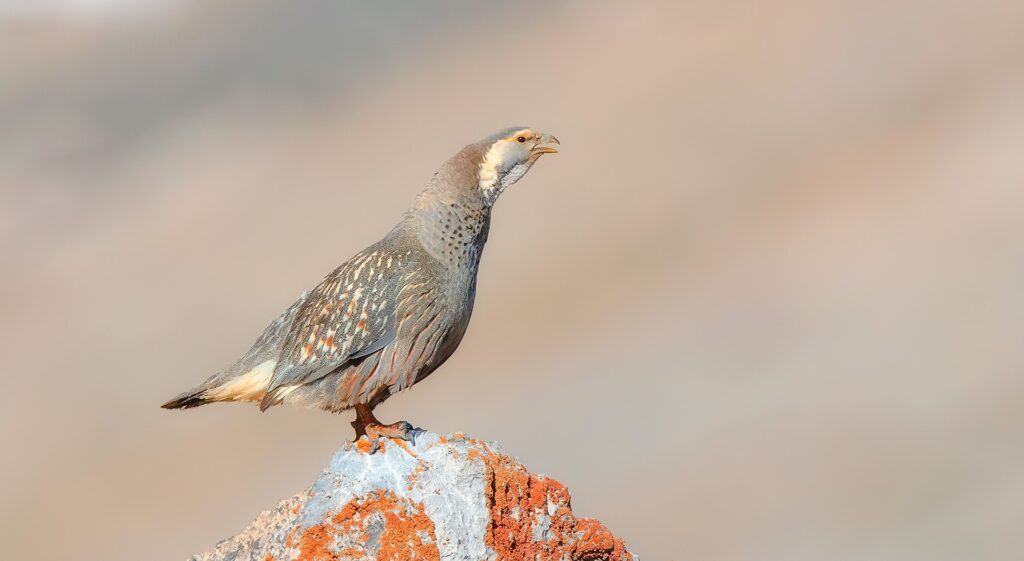
Best Birdwatching spots in Turkey
Istanbul Black Sea Shores
We recommend Istanbul‘s Black Sea shores to look for divers, waterfowl, gulls and terns. Lake Terkos, Belgrade Forest and Lake Büyükçekmece are three other options for birdwatching around Istanbul. In spring, large flocks migrating from Africa to Europe fly through the city. Observers may come across ospreys, greater spotted eagles, eastern imperial eagles, storks, short-toed snake eagles, black kites, sparrow hawks, black storks, buteos, Eurasian hobbies and stock doves. Most of these birds fly over land to save energy, taking advantage of warm air currents.
Available Tours
Birdwatching in Enez and Gala Lake
Nestled in Turkey’s far northwestern corner, where the continent of Europe gently meets the Aegean Sea, lies one of the country’s most vital and breathtaking wetland ecosystems: the intertwined realms of Gala Lake (Gala Gölü) and the Enez Floodplains of the Meriç Delta (Meriç Deltası).
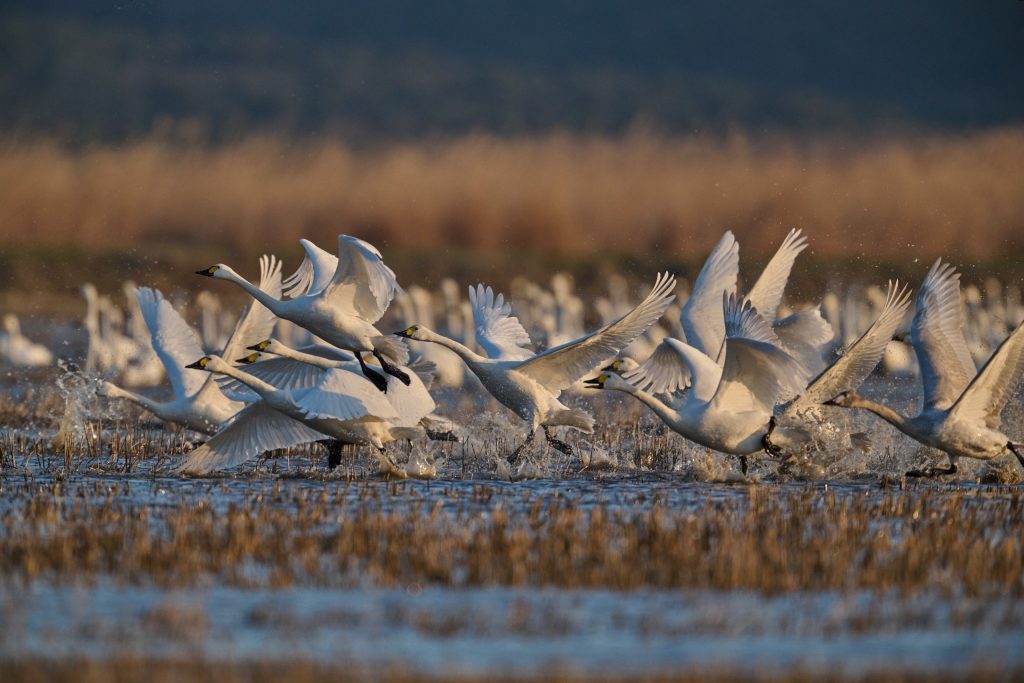
This is a landscape shaped by water and time. The mighty Meriç River (Evros in Greek), having journeyed across the Balkans, completes its long path here, fanning out into a vast and fertile delta before emptying into the Aegean. Just to the north of this dynamic delta lies Gala Lake, a large, shallow freshwater lake that acts as the beating heart of the region’s ecology. Together, these areas form a complex mosaic of habitats—a stunning patchwork of open lake surfaces, vast reed beds, seasonally flooded marshes, sandy dunes, and alluvial forests.
Recognized for its immense ecological importance, the entire area is protected as the Gala Lake National Park (Gala Gölü Milli Parkı). This status safeguards a haven for an extraordinary concentration of biodiversity. However, it is the region’s role as a critical node on the Via Pontica bird migration route that truly defines its global significance. This aerial highway, one of Europe’s most important, funnels hundreds of thousands of birds between their breeding grounds in Northern Europe and Asia and their wintering quarters in Africa and Southern Europe.
Available Tours
Birdwatching in Manyas Bird Paradise
As Turkey’s first bird shelter with a Class A certification from the European Council, famously called “Bird Paradise,” Lake Manyas, lying in Balıkesir’s Bandırma district is home to between 2 and 3 million birds each year. Manyas Bird Paradise National Park takes its name from Manyas Lake, one of the four largest lakes of the Marmara Region. Manyas Bird Paradise National Park in South Marmara, with its mild transition climate, is one of the points where 2-3 million birds of 239 bird species have come through during their migration. Here you can observe birds like spoonbills, herons, cormorants, bulbuls, pelicans, swans, geese and ducks.
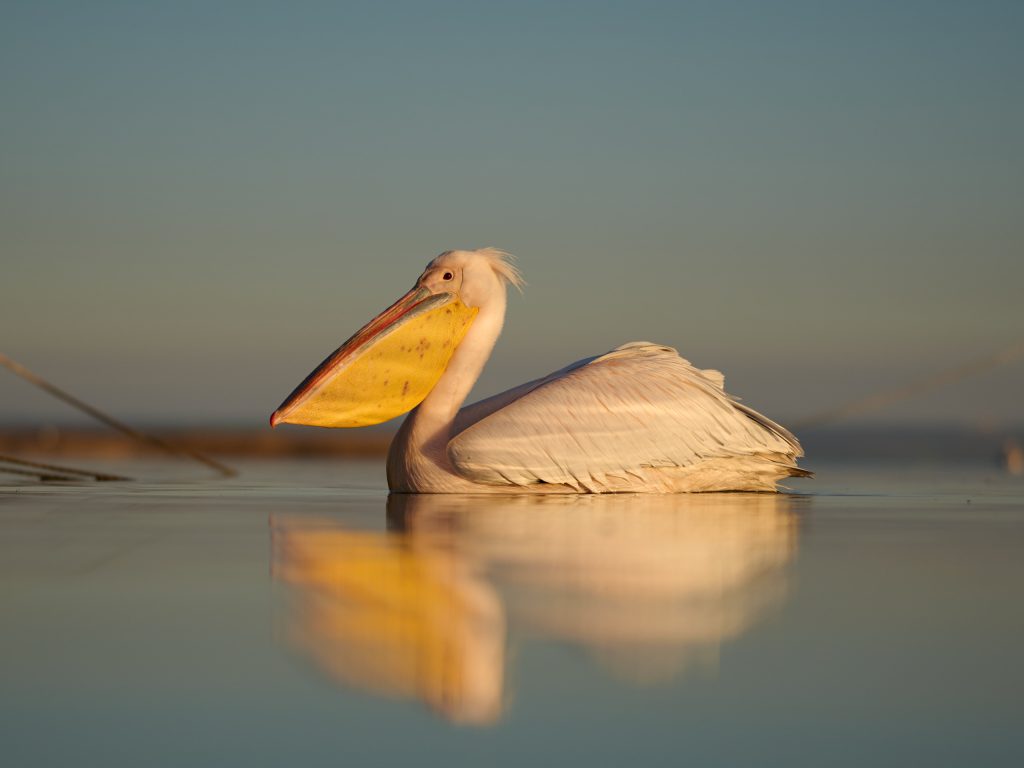
Hiking trails are connected to observatory towers and the park has a museum featuring the region’s bird species with detailed descriptions. The area is also known to house more than 118 plant and around 20 fish species.
The park is a crucial breeding ground for the endangered Dalmatian Pelican, for which special nesting platforms have been built. The endangered White-headed Duck is also a regular wintering species here
Available Tours
Birdwatching in Lake Uluabat & Gölyazı
Lake Uluabat is a vital ecosystem and a haven for birdwatchers.
-
Rich Birdlife: The lake is on a key migration route and is a breeding ground for the endangered Pygmy Cormorant and hosts many other species like Dalmatian Pelican, White-headed Duck, Spoonbill, and various herons and ducks. You can see thousands of White-headed Ducks in cold winters.
-
Unique Flora: The lake features Turkey’s most extensive white water lily beds, which bloom from May to November.
-
Stork Migration: The area is famous for its stork population. The nearby village of Eskikaraağaç is even known as “Stork Village”
Available Tours
Birdwatching in Sultan Marshes Bird Sanctuary
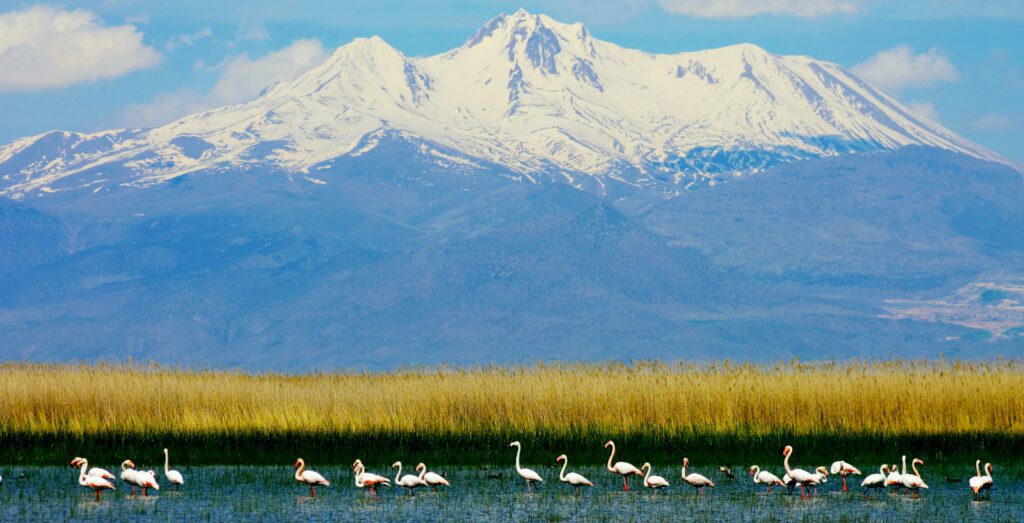
Turkey’s second most important bird sanctuary is the Sultan Marshes Bird Sanctuary. It hosts more than 250 species of birds and is a great hangout spot for those who want to observe nature. Some of the birds you’ll see are cranes, flamingos and perc. They prefer this beautiful wetland to either stand around and rest or to nurture their newborns.
Available Tours
Birdwatching in Efteni Lake Bird Sanctuary
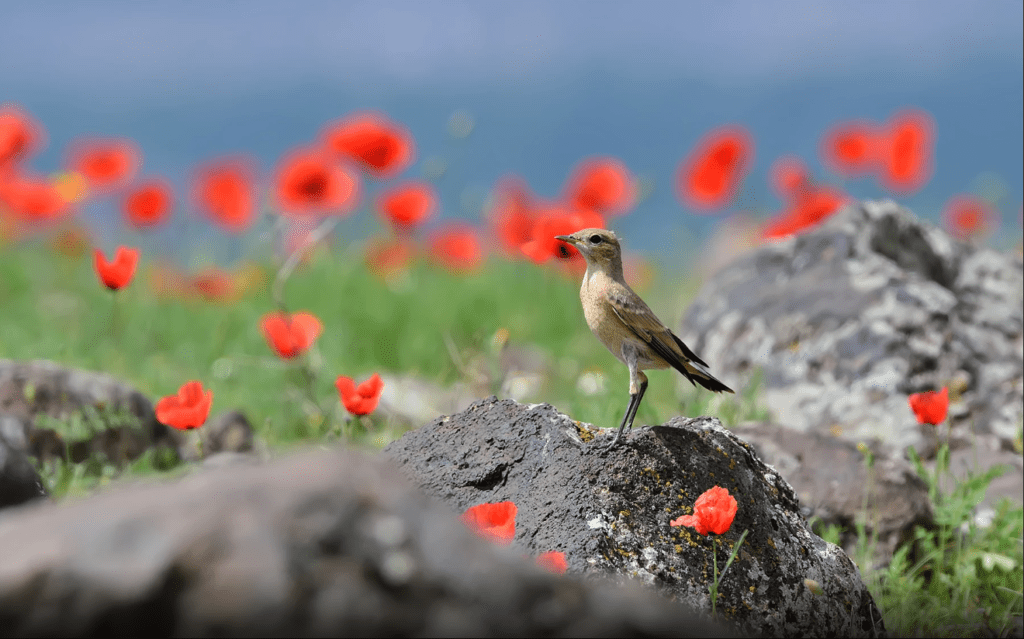
Another important bird sanctuary, Efteni Lake Bird Sanctuary is not only located on migration routes but also hosts a total of 150 kinds of birds, 35 of which are permanent. Bird species that love wetlands such as crested white herons, wild ducks, storks, angit and swans are the most abundant birds here. This lake is also famous in the production and protection of waterfowl.
Birdwatching in Bafa Lake Bird Sanctuary
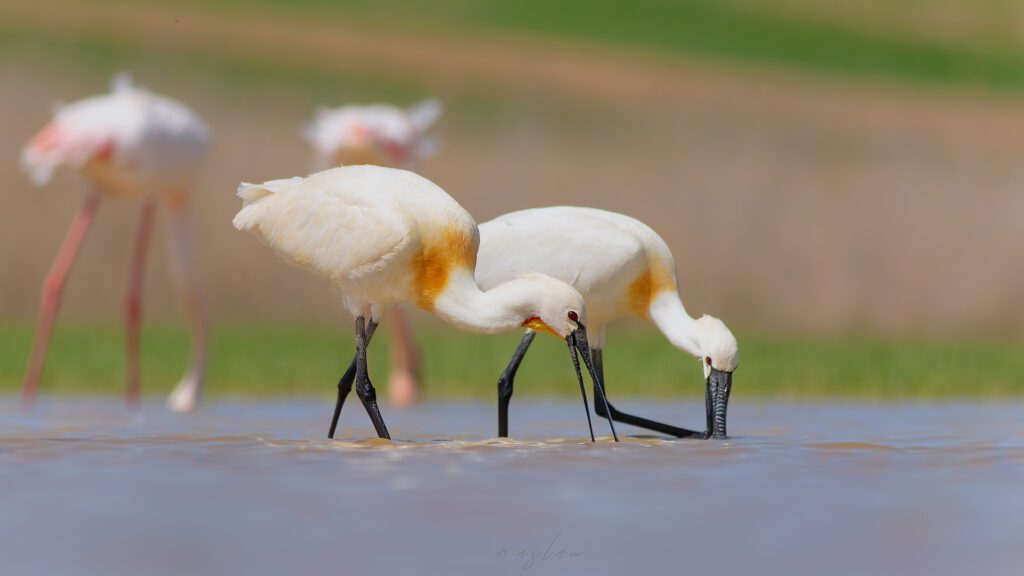
Bafa Lake Bird Sanctuary, located between Söke district of Aydın and Muğla, has significance since it hosts endangered bird species such as crested pelicans and sea eagles. The Lake and its wide range of environment offer value for ornithology. 260 bird species can be observed in 16 thousand hectares. The largest lake in Turkey’s Aegean region, Lake Bafa is another birdwatching spot that draws ornithologists from around the world, mostly in spring.
Lying between the cities of Muğla and Aydın with 50 kilometers of shoreline and encircled by the Beşparmak (Five Fingers) Mountains, the lake is a great place to spot flamingos, cormorants and pelicans. Small islets inside the lake serve as bird breeding grounds and the area’s rich flora and fauna make birdwatching more impressive. Lake Bafa houses more than 200 bird species, among which are the spoonbill, little grebe, great crested grebe, pygmy cormorant, Dalmatian pelican, spur lapwing, and water birds such as the flamingo and meke clumsy.
Birdwatching in Göksu Delta
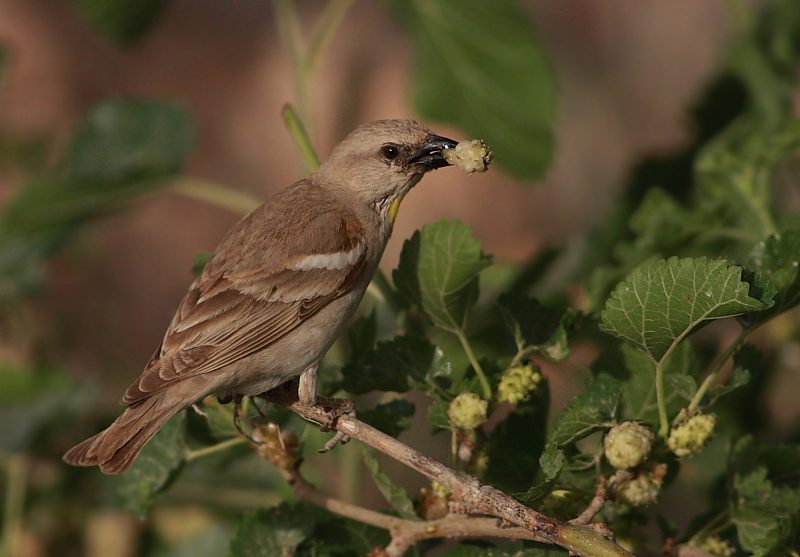
The Göksu Delta in Mersin is an internationally important region that offers the opportunity of living, breeding, feeding and accommodation to rare and endangered bird species. Approximately 300 species of birds use one of the world’s leading bird migration routes, as a wintering and incubation area, contributing to the formation of an interesting and lively landscape in almost every season of the year. Besides the domestic birds, the purple gallinule, which is seen in rare parts of the Mediterranean and becoming harder and harder to see, is the symbol of the region.
Lake Kuyucuk in Eastern Turkey
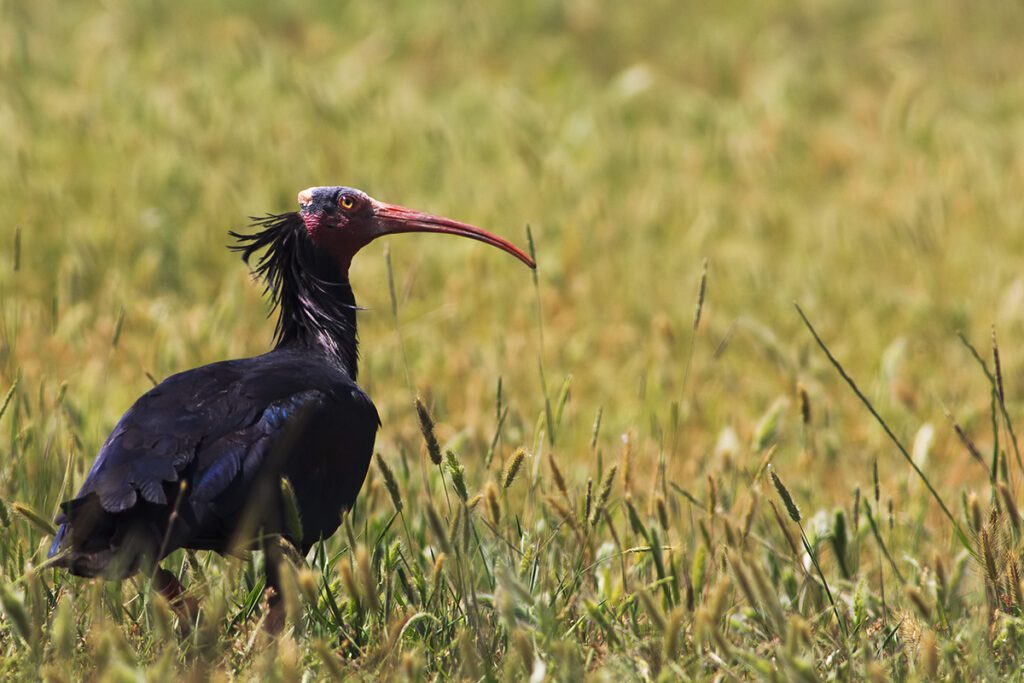
One of the most valuable wetlands in northeastern Turkey, Lake Kuyucuk, within the borders of Kars, is a breeding site for many bird species including those which are threatened with extinction. Again, the area is the habitat to more than 200 bird species and new species pop up each year during observations. The lake is an important spot, as it is located along the African-Eurasian migration route. The area is also protected under the Ramsar Convention, an international treaty for wetland conservation. An islet on the lake provides a breeding place for bird species and protects them from predators. Since 2011, a two-day bird watching festival is held in mid-June.
Important Readings
What birds can be spotted in Istanbul during Winter? , A Winter Symphony: Wild Swans and Waterbirds of Enez and Gala Lake, Birdhouses in Turkey
Frequently Asked Questions About Birdwatching in Turkey
What is the most common bird in Turkey?
The House sparrow is the best-known bird species among the people in Turkey. It is the commonest species in Turkey. The Eurasian coot is the commonest and dominant species in wetlands in Turkey. Other common birds are The Eurasian magpie, Corvidae, The Rock dove, The Great cormorant, The European goldfinch, The Eurasian collared dove.
How many bird species are in Turkey?
With almost 500 bird species to choose from, it’s difficult narrowing down a handful. But here are 10 birds that are commonly right at the top of any birder’s list.
Rueppel’s Warbler (Sylvia rueppelli), Northern Bald Ibis (Geronticus eremita), Spur-winged Plover (Vanellus spinosus), Pallid Scops Owl (Otus brucei), Masked Shrike (Lanius nubicus), Wallcreeper (murariai), White-throated Robin (Irania gutturalis), White-throated Kingfisher (Halcyon smymensis)
Why is the bird turkey called turkey?

What is the best time for birding in Turkey?
Why Turkey is a birdwatcher’s heaven?
In the spring, migratory birds head north from the African continent to Asia and Europe. In Autumn, they return, leaving their breeding grounds for the long trip south. One of these migratory routes leads south, from Hopa in Turkey’s northeast, along the Coruh river valley into Eastern Anatolia.
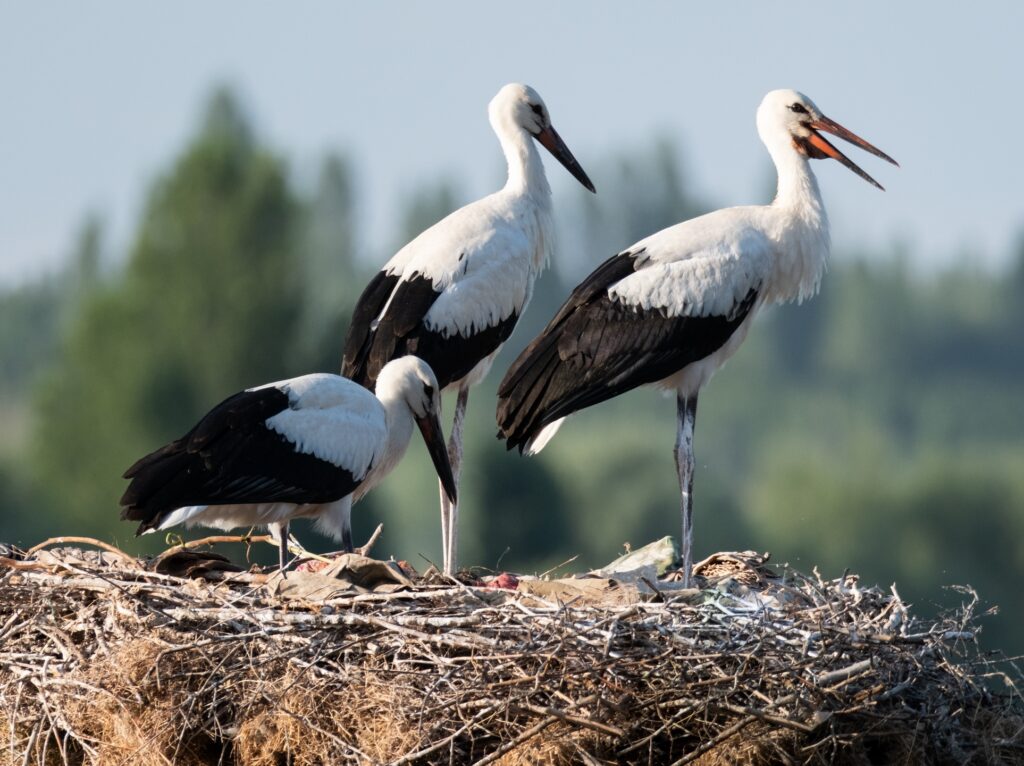
This route passes through Kahramanmaras and Antakya in southeastern Turkey. Most of the birds which travel this route are birds of prey. In fact, with 250,000 in this migratory group, this is the largest migration of birds of prey on the planet.
The most spectacular migration in Turkey, however, is the flight of storks down Istanbul’s Bosphorus Strait in Spring and Autumn. During this time more than quarter of a million storks fly over the city in vast clouds.


